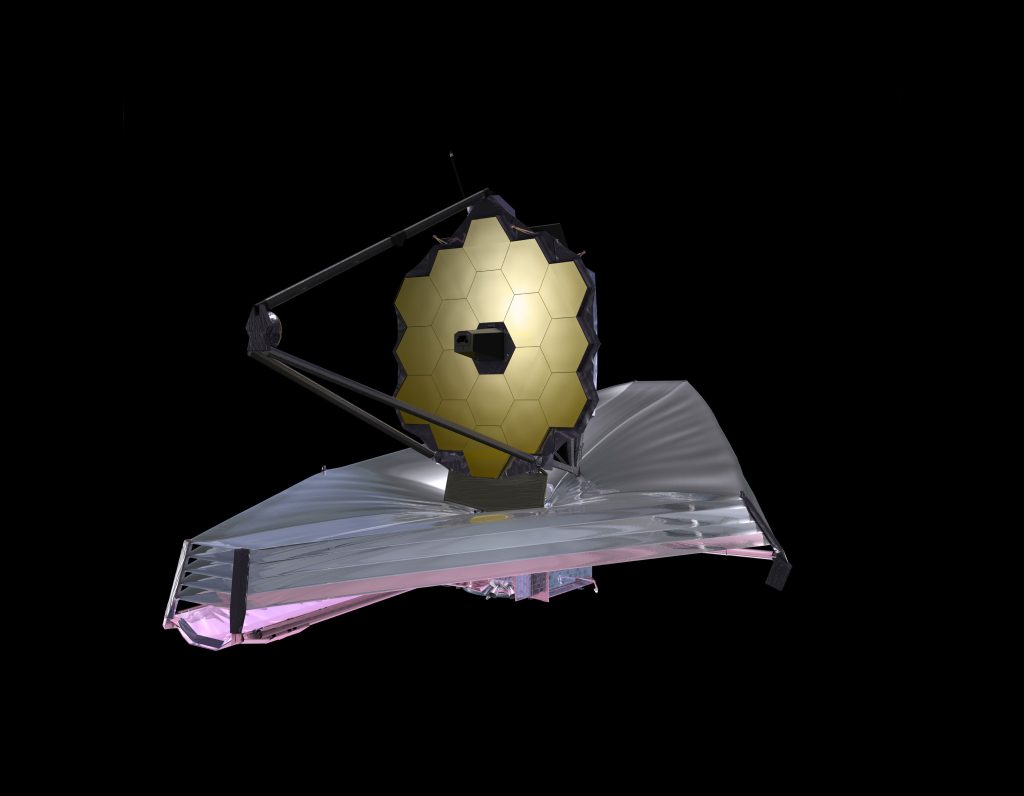
What will Webb Show Us?
Hi everyone, I’m Marley, the astronomer here at the Space Centre. Before reading this blog post, you may want a refresher on the James Webb Space Telescope (JWST). Information on its scientific mission here.
We’ve been through quite a journey with JWST. After surviving a cancellation attempt in November 2011, and going through multiple launch delays (five in 2021 alone!), the telescope is about to conduct science operations. More than 11,000 hours of observations are set to go ahead as soon as the telescope is ready. To finish its commissioning period, JWST just needs to test 17 different modes across its instruments. You can see how many of them have been completed here.
JWST has already given us some wonderful images as it has been going through its commissioning period. The completion of mirror alignment known as ‘fine phasing’ for the NIRCam instrument on March 11th provided us with an image of 2MASS J1554042+6551277, a star far too faint for our eyes to see. Photobombing this star are distant galaxies and stars. On April 28th, JWST completed alignment across all instruments and gave us images across its field of view.
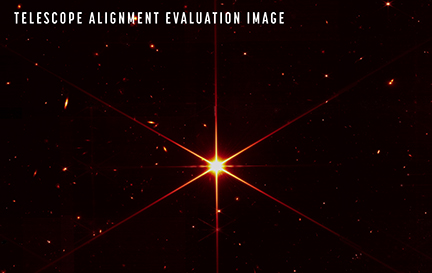
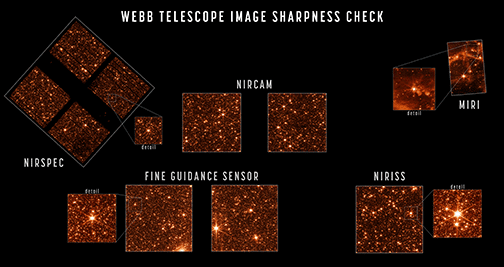
JWST science operations are slated to begin in the summer. The proposals that have been awarded time on the telescope are all publicly available and range across JWST’s four science themes. What we don’t know: what JWST will look at first.
The images we currently have from JWST are amazing, but they are not as show-stopping as they could be. Think about some of the eye-catching Hubble anniversary images. Grand galaxies, beautiful nebulas. Those are the types of images we are waiting on from JWST.
These first eye-catching images from JWST are called Early Release Observations. They are some of the first images and spectra were taken during the commissioning stage before scientific observations begin. These images will not necessarily be scientific images. Instead, they are meant to be seen and appreciated by a broad audience. They are meant to show off all the telescope can do and are expected to be released in early July. The targets of these images are being kept top secret. Not even a hint has been given. If you are as impatient as I am – don’t worry. I’ve got some ideas as to what those targets might be.
1. The Pillars of Creation
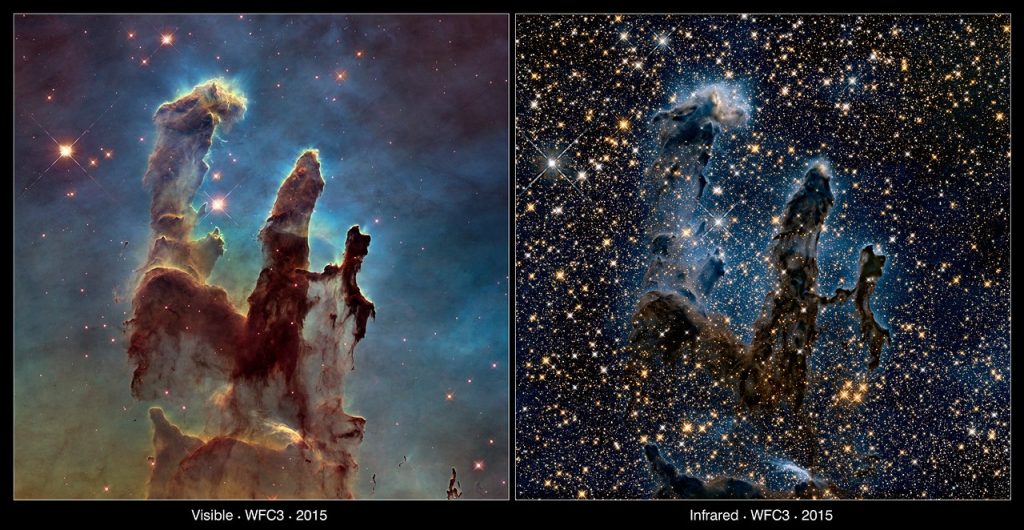
My gut tells me this will be the first image we see from JWST. It would tell the perfect story. JWST has long been described as the successor to Hubble. Results from Hubble pushed scientists to go beyond it, into a wavelength that Hubble only scratched the surface on. One of the most well-known Hubble images is the Pillars of Creation from the Eagle nebula. You are probably most familiar with the visible light image of it, but Hubble also took an image in the infrared. JWST will go far beyond Hubble’s abilities, and what better way to show that than by looking at something Hubble has seen? The story of the same nebula in visible, to infrared, to even better infrared? Seems too good to pass up.
2. A Deep Field
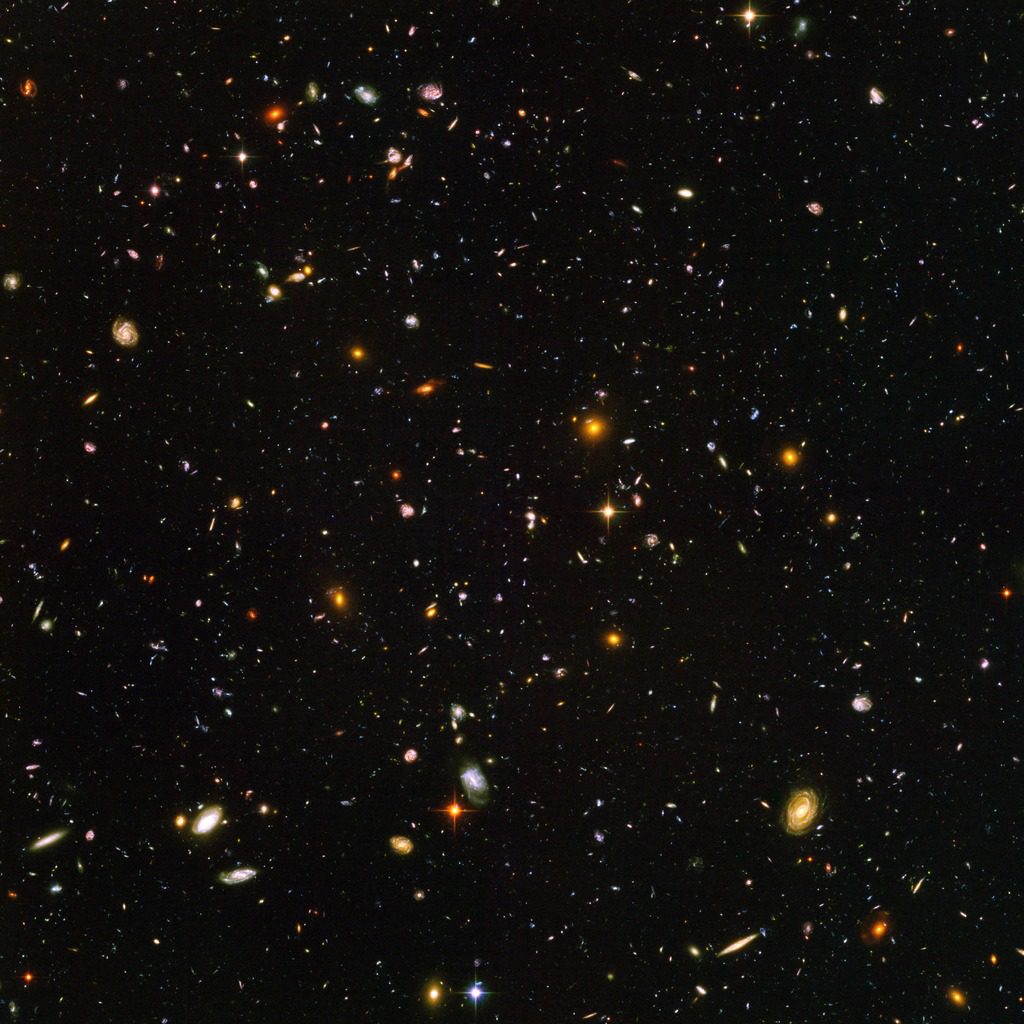
In its alignment image, the NIRCam instrument was able to see distant galaxies and stars – some of which we had never seen before – after only looking for 35 minutes. If Hubble can produce a remarkable image like the Hubble Ultra Deep Field, which shows us 10,000 galaxies after looking for about 12 days, imagine what a more powerful telescope could do.
3. The Tarantula Nebula
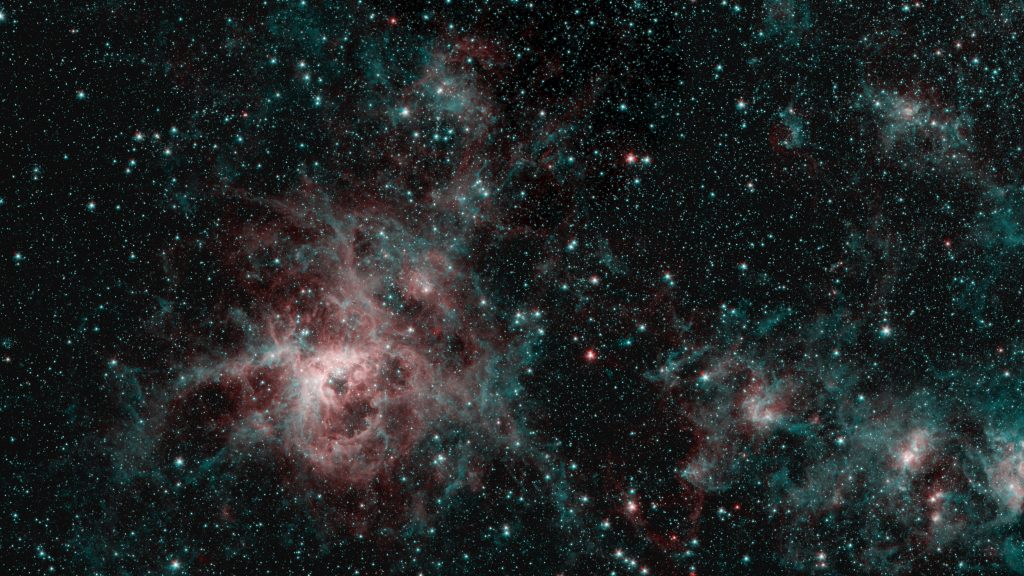
This image of the Tarantula Nebula is from NASA’s Spitzer Space Telescope – an infrared telescope whose mission ended on January 30th, 2020. The red colour represents hot gas emitting at an infrared wavelength of 4.5 micrometers. The blue colour has been assigned to dust composed of molecules that are known as polycyclic aromatic hydrocarbons. These molecules are made up of carbon and hydrogen – elements that contribute to the chemistry of interstellar gas. This gas can go on to create stars. Understanding the gas and these molecules can give scientists a new understanding of how stars and planetary systems are born. Regions that show both are coloured white.
The Tarantula Nebula is popular for astrophotography and is also the biggest star-forming region in our neighbourhood. Located in the Large Magellanic Cloud, it is close by and JWST has already taken a test image there. The test image from MIRI – one of its science instruments – was taken in the same position as a previous Spitzer image, showcasing the power of JWST compared to the previous infrared telescope. What more will JWST be able to show us?
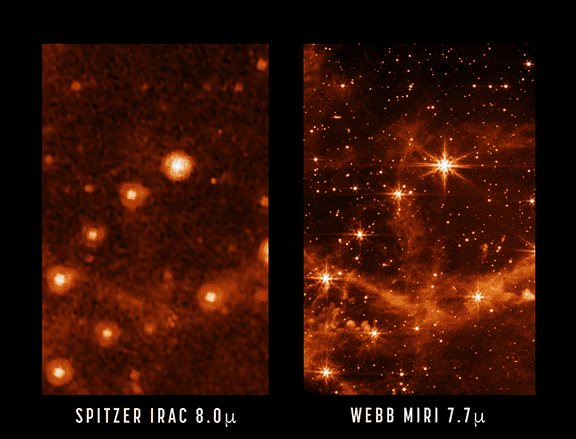
A comparison of an image taken by the Spitzer Space Telescope and JWST.
For now, try some of the following activities!
Astronomers Playlist
Time
Activity
10 min
Watch this short video and learn how JWST’s new instrument called an integral field unit will work to capture images and spectra simultaneously.
Learn more about the recently retired Spitzer space telescope in this video. How will JWST improve our knowledge?
30 min
Read this short kid-friendly article about galaxies and then make a Galactic Mobile – a collection of galaxies that can turn in the wind and sparkle in the Sun. (For younger kids) Or read this overview of NASA’s research focus on galaxies and check out some of their newest discoveries.
Ask yourself: What kinds of galaxies do you think JWST will see?
60+ min
Learn more about astrophotography with this short article from the BBC’s Sky Tonight magazine.
Participate in NASA’s Summer 2022 Astrophoto Challenges! You can either capture your own image of the Carina Nebula and process it using NASA software or use NASA software to process NASA data of the nebula – or both! The MicroObservatory and NASA’s Universe of Learning team could select your work as a standout entry – meaning you could get feedback from NASA scientists! Submissions are due July 31st.
Ask yourself: How does the way you look at images of nebula change after you’ve learned more about the challenges of processing data from telescopes?

